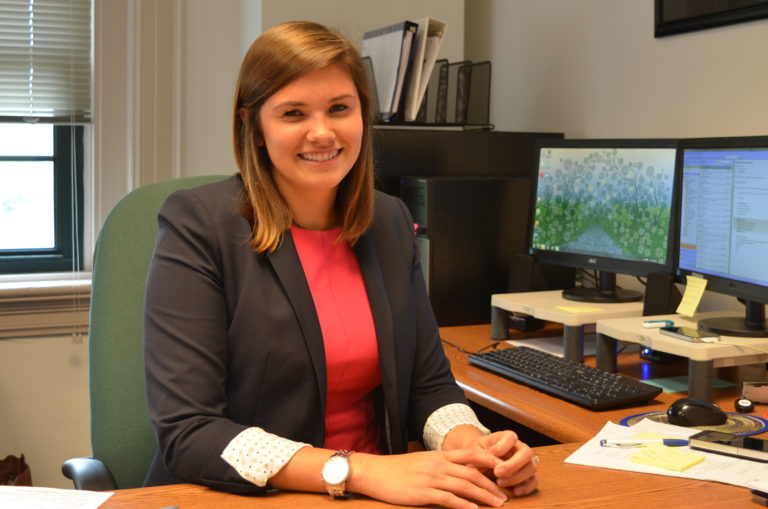Christina Hallingse, Asheville Police Department’s new Public Information Officer, sees her role as equal support for the APD and to the public, and says that the two roles go hand in hand.
She brings a broad perspective to public safety planning and how it plays out in different environments.
Hallingse comes to Asheville following a role as the Public Information Officer/Grants Administrator for the Charlotte-Mecklenburg Emergency Management Department. With a population of 1 million people, even a Panthers game can trigger emergency management measures.
Before that, she worked as the Public Information Officer in Henderson County where she interfaced with 26 departments. Needless to say, she got to know a lot of people up close in that community of 100,000.
“You definitely see two different perspectives inside and outside of the organization,” Hallingse said. “In some ways, you operate at different levels, but there is always a fundamental component to public safety and that’s communicating with the public.”
Hallingse’s arrival in April marks a big step in the APD’s efforts to increase connections with the public and the communication component outlined in the department’s Strategic Operations Plan. That plan, rolled out last July, describes significant changes the department plans to implement over a three year period.
Hallingse is well aware of the attention on the Asheville Police Department and the challenges it faces as it makes changes internally and in the community. She says a big part of moving those changes forward is listening.
“We are glad to have Christina on board and are confident that her expertise will strengthen the department’s relationship with the community it serves,” said Interim Chief Steve Belcher. “She has jumped in with both feet and demonstrated her commitment to effective and reliable communication.”
Hallingse has already boosted the department’s social media presence, using frequent posts to broadcast important community news such as the ongoing “Click It or Ticket” seatbelt initiative. The point of that strategy, she says, is to increase messaging about public safety initiatives (like getting people to wear seatbelts). The police department would much rather educate the community on these safety initiatives, rather than issue citations.
She is also working to spotlight officers’ interactions with the public, like officers’ recent visit to a preschool and a field trip with kids from a public housing community. Most times, she has the officers themselves send smartphone pictures for her to post online.
“We all need to be the face of the police department,” she says. “And getting the word out about officers’ interactions with our community makes a big difference.”
Hallingse’s passion for emergency management and public safety took off in 2005, when Hurricane Katrina devastated Gulf Coast communities. Though she grew up in Virginia, Hallingse was born in New Orleans and had relatives and family friends who lived there through the disaster. Watching the response to Katrina unfold on television left an impression that lasted through her college career at Appalachian State, where she earned a degree in Community and Regional Planning and a Master of Public Administration.
“It has stuck with me, the idea that everyone needs to plan to survive on their own for 72 hours in major incidents. That’s a big communication effort all its own,” she said.
Because of that experience Hallingse has the utmost respect for public safety. “They dedicate their lives to the job,” she says. “And communication is integral. If we’re not educating, it is going to be hard for them to do their jobs.”
